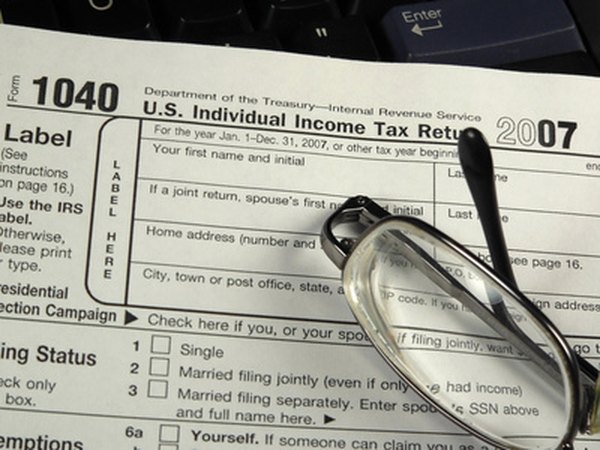Avoiding a 1099-R Penalty for a 401k
Avoiding the early withdrawal penalty takes a little extra paperwork.
tax forms image by Chad McDermott from Fotolia.com
Taking a distribution from your 401k plan before 59 1/2 usually results in an extra 10 percent penalty. When you receive your 1099-R documenting your early distribution, it will usually have a code 1 in box 7, representing a non-qualified distribution. The only way to avoid the early withdrawal penalty on a 401k distribution is if you qualify for an exception specified in the tax code. These exceptions include a permanent disability, if you retired after turning 55 years old or if the distribution is part of a series of substantially equal periodic payments. Other events that may qualify for a hardship distribution, such as potentially losing your home or paying for college for a child, do not qualify for an exception from the penalty.
Report the amount of the 401k plan distribution on line 16b of IRS Form 1040 as a pension and annuity distribution. Even if you qualify for an exemption from the penalty, you must still pay income taxes.
Step 2Report the amount of the distribution on line 1 of Form 5329.
Step 3Report the code that corresponds to your exemption next to line 2 of Form 5329. The codes are listed on page 3 of the Form 5329 Instructions. For example, if you suffered a permanent disability, write "03" next to line 2. Alternatively, if you retired after turning 55 years old, write "01" next to line 2.
Step 4Report the amount of the distribution that qualifies for your exemption on line 2. As long as this amount is equal to or greater than your distribution, you won't owe any penalty. For example, if you retired after turning 55 years old, your entire amount is exempt from the penalty.
Step 5Report the amount, if any, in excess of the exemption amount on line 3. If your exemption covers the entire distribution, enter "0."
References
Resources
Warnings
- Not all of the exemptions listed in the Form 5329 Instructions apply to 401k plans. For example, the exceptions for distributions made to purchase a first home or for higher education expenses only apply to distributions from IRAs.
Writer Bio
Based in the Kansas City area, Mike specializes in personal finance and business topics. He has been writing since 2009 and has been published by "Quicken," "TurboTax," and "The Motley Fool."

